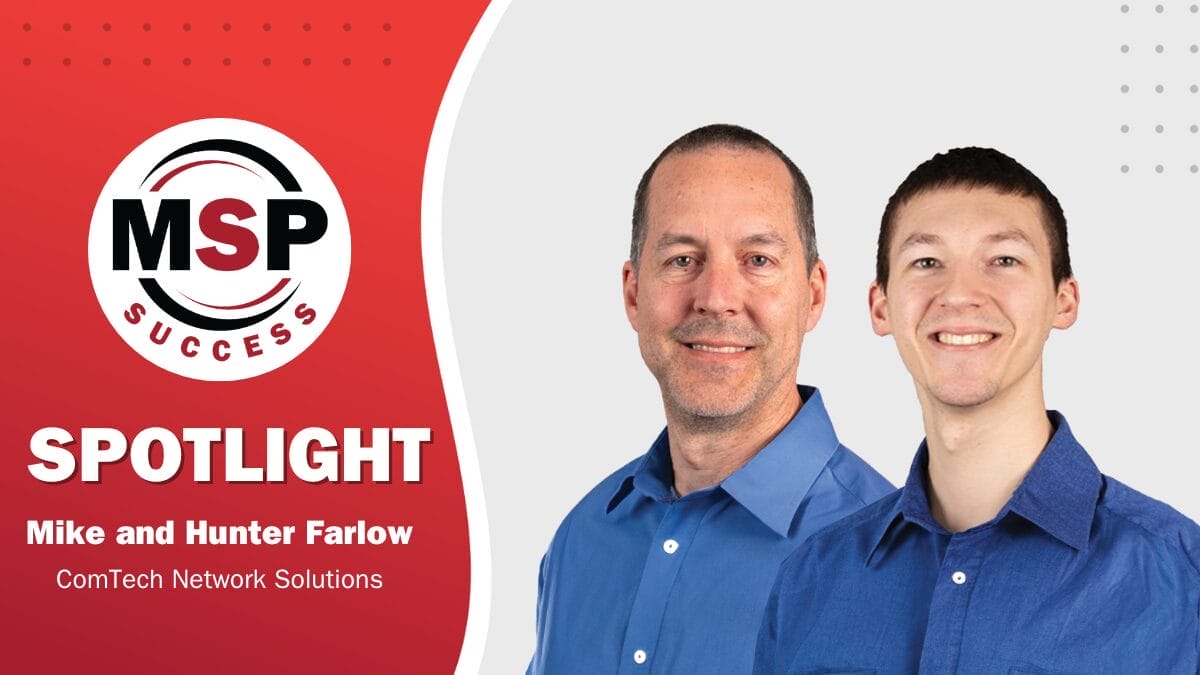Warning: I’m about to date myself.
Twenty-three years ago, when I first started working at a direct response marketing agency selling lead generation services to small businesses, there were only a handful of services I could sell them because there were a limited number of ways to send marketing communications directly to a client.
Direct mail, telemarketing and fax (which was the e-mail marketing of the time) were the mainstays besides networking events and referrals. Outside of that, you had radio, TV, print advertising in newspapers and trade journals and, of course, the good old Yellow Pages for inbound lead generation. NOT a long list, at least compared to the list of social media sites and online marketing available today. Further, a Yellow Page ad or direct mail piece didn’t require constant attention and feeding like a Facebook page or YouTube channel does. E-mail and SEO were in their infancy and many companies didn’t have websites, so most simply bought a Yellow Pages ad and hired sales reps to pound the pavement, shake hands and kiss babies. Easy.
Today, if you visit the sales floor of many businesses, it’s eerily quiet, the days of noisy, busy sales floors a thing of the past. E-mail, LinkedIn and social media have become the preferred mode of communication for the vast majority of timid sales reps who dread making phone calls to prospect new clients. Many companies have abandoned ALL offline advertising and marketing for FREE social media, buying into the pervasive buzz about how “everyone” is online and feeling left out if they don’t participate too. But has this been the correct choice? Have we too quickly abandoned methods that work for the free, easy and instant gratification that social media offers? Does social media REALLY pay off when selling IT services?
Without a doubt, when used correctly it can – but the ROI on anything is directly related to how you apply it or use it.
ANY media or marketing you don’t know how to properly apply will “suck” and not deliver results, and one thing I can tell you with certainty is this: to GET social media to work, you have to put in significant time and do it properly. You can’t just have a LinkedIn company page or occasionally post pictures of what you ate for dinner on Facebook and expect success. You have to CONSTANTLY create, post and monitor content that is of interest to your audience…that will get them commenting, sharing and staying tuned in. Finding time to create and post such content is a big time-suck, especially to a small business owner wearing multiple hats. Then figuring out what to post can be an even bigger hurdle. To make matters worse, it’s not something you can completely delegate or outsource because social media success has a lot to do with sharing the DNA of your organization – your values, your message, your opinions about certain topics. An outside consultant has to really be tuned in to “your” voice to do this correctly for you. Otherwise, you will still want to create (or be heavily involved in creating) the content and utilize them to help you get the content posted properly.
So, a question you have to ask yourself is this: Does the juice justify the squeeze? Again, yes, if done properly; so, my advice to you is this…
First, make sure you are crystal clear on WHO you want as a client. Only then can you determine if any one particular social media is an appropriate media worth your time or effort – or not. In some niches, you might need to invest your marketing budget into salespeople and trade shows. I spoke to an entrepreneur the other day who built a $3 million business from scratch practically overnight by recruiting a team of salespeople with pre-existing knowledge and connections to doctors’ offices (his target audience) and being very strategic and selective about WHO he called on – a process I cannot reveal because I was sworn to secrecy. But I can tell you this – he didn’t use ANY social media to make it happen. It was 100% hyper-focused on building a list of the MOST LIKELY buyers and delivering a service that was unique and profitable.
Second, if you are going to be on social media, BE on social media. This is not a place where you can be “half-pregnant.” Don’t just have a Facebook page and never post to it. Anyone who does happen to wander onto the page will get a sense that it’s an abandoned ghost town with tumbleweeds, vultures and not much else. If you’re going to do SEO, then don’t hire a guy to work on it for a few months and then give up. You have to commit to constantly posting new and relevant content, communicating that to your list and driving traffic. You need relentless consistency.
Third, if you DO determine that a particular social media or online marketing media IS a viable way to communicate with and prospect for new clients, put your full effort there instead of watering yourself thin, trying to keep up with all of them half-assed. Why have a Twitter feed if you’re not going to ever log in and post? There’s enormous peer pressure to “be out there” on every social media page there is, but if you simply don’t have the resources to do it well, and it’s not an ideal way to reach prime prospects and your chosen target audience, don’t bother.
As you will see from this survey of MSP Success subscribers, MOST are not having tremendous success with social media. Does that mean you shouldn’t use it? Not at all. Most MSPs have a LONG list of things they aren’t doing well, particularly in sales and marketing.
I encourage you to review this report and our comments to formulate a smart social media strategy that is founded in REAL profit, REAL return for your investment. Not friends, subscribers, followers, likes and hashtags, and definitely not what the “cool kids” are doing. Use proven direct response marketing principles at the core of your strategy, DON’T just post stuff to “get your name out there” or to build a brand.
And finally, I strongly advise you to use social media in conjunction with other paid and offline advertising. For us, that is what has given us the biggest lift in response and ROI: A blending of offline and online in a single campaign driving to a single offer. Now, let’s dig in…
Which Social Media Sites Do You ACTIVELY Promote Your Company On?
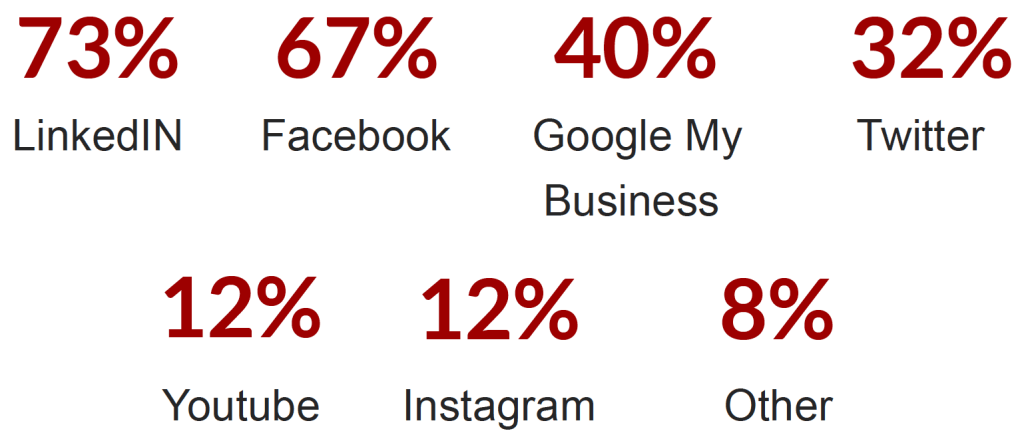
Not too surprisingly, LinkedIn (73.4%) and Facebook (68.6%) were the top two social media sites used for ACTIVELY promoting businesses. Google My Business (40.4%) came in third with Twitter (32.4%) falling in line in the fourth spot. Using social media, when done effectively, can build your authority, build trust and affinity, give you a bigger presence, circumvent search, and reach your IDEAL target audience directly, much of the time for free. But to do this you must arm yourself with a plan. When choosing which social media platforms to use, remember that you need to stay on top of which social networks YOUR audience is using. Different networks will be preferred even across different age groups. While you can often post the same content across multiple platforms, each platform accomplishes a slightly different purpose. For example, LinkedIn is more business oriented which means reports, articles, blog posts, and videos with tips and information do better and help build your authority. Facebook, on the other hand, may be better for building more of a rapport and for getting people to like, know and trust you as you sprinkle in posts that are more entertaining and show more personality.
Which Site Has Been MOST Productive For You In Terms of Getting More Clients & Generating Leads?
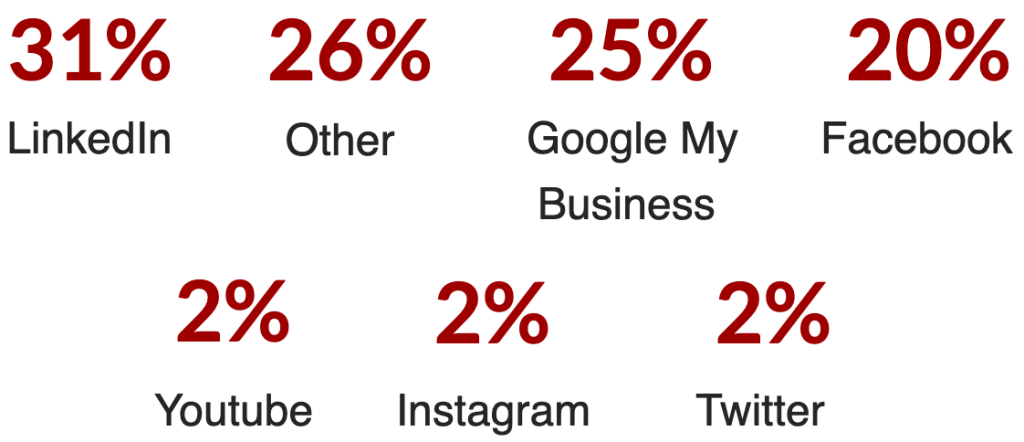
Following up on which sites were used, we asked subscribers which were the most productive. This time LinkedIn (31.2%) and Google My Business (25.3%) led the pack, with Facebook (20.4%) falling further behind in third place. This is, of course, because LinkedIn and Google My Business are geared toward conducting business, whereas Facebook is more focused on the social and relationship-building aspect. Also, LinkedIn is a platform that allows you to search and specifically target the ideal prospect, client or person you are trying to reach, and Google My Business is directly tied to someone searching for YOUR business. When we asked what social media was most productive, the most common answer we received was “none.”
Which of The Following PAID Advertising Methods Are You Using?
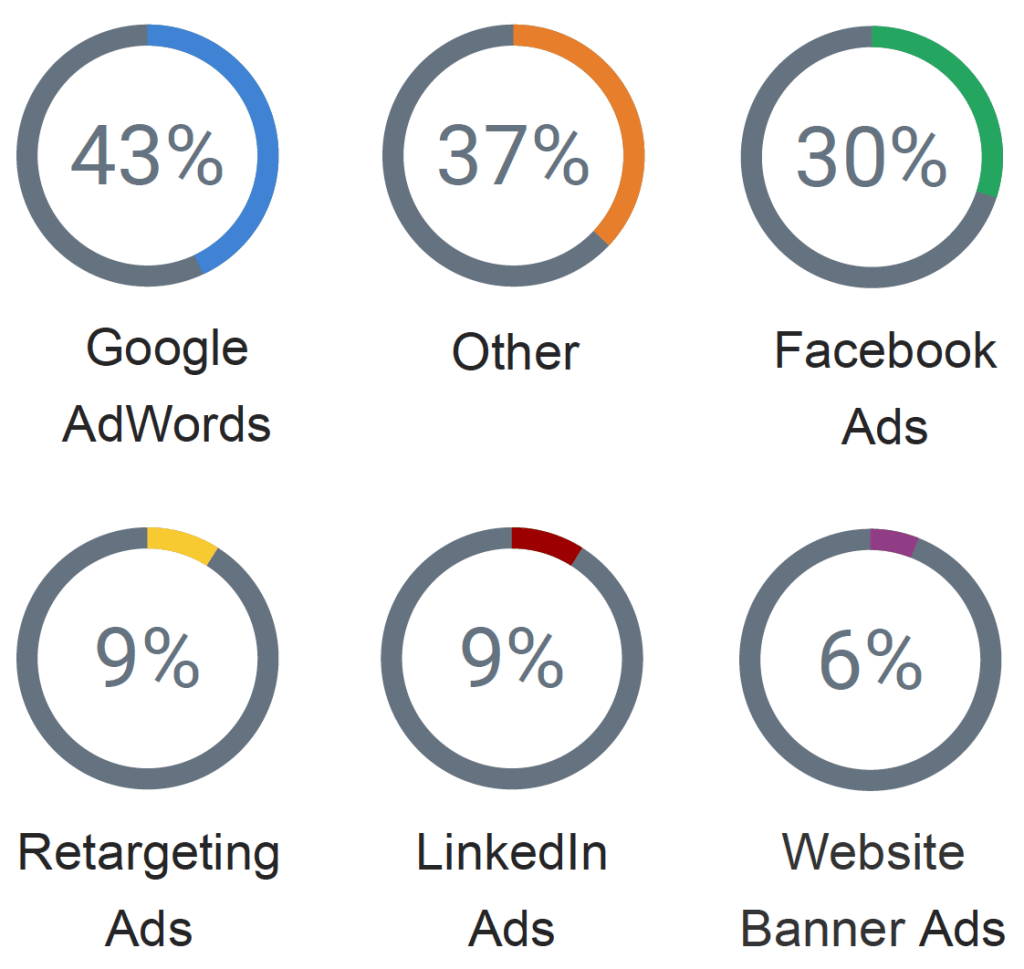
Google Adwords (43.2%) and Facebook Ads (29.5%) are the top two paid advertising methods that MSPs are using, however only a little over half that number found Google Adwords as the most productive with an even smaller percentage finding Facebook ads to be productive. For those who wrote in what paid advertising they were using (37.2%), the majority said they weren’t using any paid advertising. Bing Ads and Instagram ads were two additional options written in.
What PAID Advertising Has Been Most Successful In Terms Of Getting Qualified New Leads and New Clients?

Getting your paid advertising campaigns to produce qualified leads and clients is a challenge for the majority of MSPs, with 59.4% indicating that none of the paid advertising they do is productive. Getting paid ads to work was also listed as one of the biggest challenges MSPs have, coming in second on our list of top challenges at 41.5%. The most successful paid advertising platforms are Google AdWords (24.6%), Facebook Ads (9.6%) and LinkedIn Ads (5.9%).
Paid advertising can be very productive and help you grow your audience when the right processes are in place. One of the key principles that will help you avoid wasting money, give you a better return on your investment, and attract better clients is the principle of specificity. The more specific you are in targeting your audience, the better the results you will receive. There are several methods you can use to achieve specificity. For example, Facebook lets you create custom audiences from your customer list that you send newsletters, emails, postcards to, website visitors, and engagement. This has been shown to improve results 3.3X because you are marketing to your internal list.
Facebook and Google Adwords offer the opportunity to create “Lookalike Audiences” to reach new prospects who are likely to be interested in your business. This is because the “lookalike audience” is similar to your best existing customers. Essentially, this is a way to clone your best customers With Google, you can add phone numbers and mailing addresses to target known customers.
Retargeting, which consists of showing people certain ads based on their online activity, is another strategy that can help you improve results. This is because you’ll only spend your money on people who’ve raised their hands before by visiting your website, blog, landing page or watching your video, etc.
Create more tightly defined targeted audiences that match your ideal client and you’ll not only make your ads more productive and grow your list, but you’ll do so at a reduced cost.
What Are The Biggest Challenges You Have As It Pertains To Social Media Marketing?

Not too surprisingly, the #1 answer we received was coming up with good content to post, with 43.6% of MSPs indicating this at the top of their list.
That’s because creating consistent content that is valuable and engages your audience is brutally difficult. With SO much content vying for your audience’s attention, and real entertainment only a click away from your post, you have to be very strategic and smart about your approach. Here are a few guidelines to help you.
KNOW YOUR AUDIENCE: This goes back to my opening comments about everything hinging on the WHO. When you know your target market well, you know what will interest them, which helps you to create useful, interesting content. If this is difficult for you, then you have homework to do.
POST APPROPRIATE CONTENT FOR THE MEDIA: LinkedIn is not a place to post an update on your dog’s new haircut, but it IS appropriate to post business-related content that a prospect needs to know to do their job better, protect their business, grow sales, etc.
Tips For Coming Up With Content:
- Create a FAQ series. Take the top 10 most frequently asked questions you get from clients and create an article and/or video about it.
- Create a “Top 10 Questions You SHOULD Ask An IT Services Firm Before Signing A Contract.” This is a buyers’ guide broken down into 10 (or more/less) pieces of content.
- Highlight a client success story or case study. Clients like the free exposure, and if you write it correctly, they’re positioned as smart, forward-thinking companies. We routinely post and highlight a client every week, providing details of their successes.
- Post pictures and commentary about a seminar, workshop or event you’re hosting or sponsoring. Give updates on what you’ve learned and what’s happening like a “man on the street” reporter would do.
- Comment on NEWS related to what you do. Obviously when cyberthreats occur is the perfect time to post a video or article on what’s happening and what people should do to protect themselves.
- Post a “shiny new gadget” of the month/week. In my local news station, there’s a regular segment called “What The Tech?” where a guy named Jamey Tucker talks about a new technology or app, reviews and compares various devices, apps and software, and provides security tips.
- Post cyber security tips. There’s a LOT you can cover here, from simple strategies (like how to create a good, strong password) to specific compliance strategies specific to your niche.

Coming in a close second, 41.5% reported having trouble getting paid ads to work. When you think about it, paid searches SHOULD be a slam dunk for every IT services company. You only pay to appear when someone is actively searching online for a specific service you provide (IT services, IT support, etc.). Further, you only pay when they click on your ad – every marketer’s dream.
Problem is, paid advertising is expensive. The cost for getting someone to click on “IT Services” ranges from $8 – $55, which can vary based on your area/competition, what position you want to show up in, etc. Further, there’s a lot of spam, competitors, looky-loos and “accidental” clicks that can add up FAST, escalating your costs. Another problem is that bidding is, and always has been, an auction where you have to constantly increase what you’re willing to pay to beat your competitors to the top.
But you CAN get this to pay off. Here are a few strategies you need to keep in mind when using PPC advertising:
- Don’t use broad-match keywords for IT, unless they are a long phrase consisting of 4-5 words or more. Short keywords in the IT industry tend to trigger some wildly irrelevant search terms. Instead , focus mainly on exact, phrase, and modified broad match.
- Improve the relevance further by adding as many negative keywords as you can.
- Send your traffic to a landing page that closely matches what the person was searching for (based on the keyword).
- Use remarketing to bring your most engaged visitors back to your site and keep you top of mind while they’re still in the decision-making phase.
- Use UTM parameters in your URLs to keep track of the keywords; this way you can tell what someone searched for.

Finding the time to get social media done tied for third, with 37.8% indicating this was their biggest challenge. As I stated in my opening, this is why you have to be selective about what channels you’re going to put your focus on. You’re far better served to pick one or two really productive sites where your chosen audience engages, rather than trying to do it all.
Using the content tips above, I would suggest bulk-producing posts ahead of time so you have a bank stored up that you can drip out. Second, get someone to help you with getting the content up and with the responses. If this is an area where you need help, might I shamelessly plug: www.TechnologyMarketingToolkit.com/dfysocialmedia.

For 37.8% of MSPs, getting followers and subscribers was the biggest challenge. Part of this may be due to them not posting relevant, interesting content consistently or putting a focus on getting more followers and subscribers.
However, I encourage you to go for quality over quantity. I know a NUMBER of social media “gurus” who have a lot of friends, followers and subscribers but can’t fill a webinar or a seminar…or who have abysmal sales. One friend of mine (who will remain nameless) has a HUGE Facebook fan base and several YouTube videos with 4 million views – yet he privately came to me needing a loan to keep his business up and running. That’s not a dig at him personally, but to underscore that having a big subscriber base is NOT a success – making a profit IS. Don’t get sucked into the “more is better” playground antics of social media.
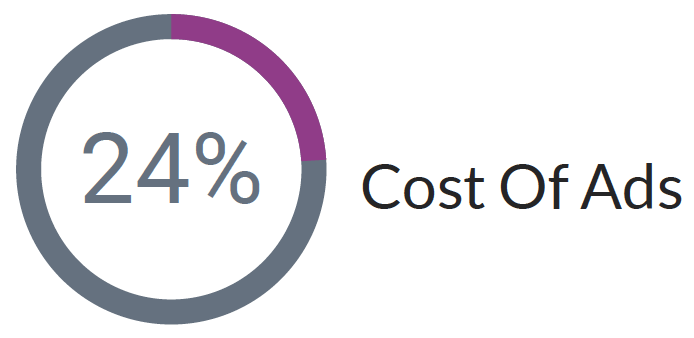
For 23.9%, the cost of running ads was the biggest detriment to their success. Several factors influence the cost of your ads, more than we can list here; but if I had to guess the real problem, it’s that they don’t know how to write ads that convert. A close second would be that they are being far too cheap about customer acquisition.
For most MSPs, the cost for getting a qualified appointment can be $300 to $500. If you’re trying to get appointments with qualified prospects to sell managed IT services, that shouldn’t be a problem given the large dollar amount per contract and the longevity of the agreements (most keep their clients well beyond the three years they write contracts for).
Outside of that, you can save money and keep your costs down by taking a number of steps such as targeting a more specific audience, using bid caps, testing your ads before releasing them to a larger audience and setting up your Facebook Pixel and retargeting. Another is to ensure all leads are quickly, aggressively and consistently followed up on. Not all leads will buy right away either, so if you’re abandoning the leads after a week or two of follow-up, you’re missing out on a BIG pool of opportunity. All qualified leads should be put in a drip/nurture campaign so that WHEN they ARE ready to buy, you’re there ready. When you employ these, coupled with ways to make your ads more effective, you’ll find ad costs are no longer an issue and produce a reliable ROI.

Only 6.9% of respondents indicated that keeping up with the responses and conversations were difficult.
Replying to your social media comments should be a key component of your social media strategy. Speed matters. While some consumers find it acceptable to respond within 24 hours to a few days, approximately one-third of consumers expect a response within 30 to 60 minutes.
Interacting with your audience makes an effective way to connect with your target market. Plus, it can be a demonstration of great customer service that helps you retain existing customers and win new ones. (BEWARE: Unanswered comments can give your business a reputation for bad customer service and potentially lose your business.)
That said, making time to reply can be a challenge. Using a social media management platform such as SproutSocial or Hootsuite, for example, is one of the best ways to stay on top of replying to comments. This will not only speed up and simplify the process, you can also use these management platforms to save you time by allowing you to pre-schedule across multiple social media sites all at once.
Assigning multiple people to this task and developing a process for the people responding to customers can also help spread the load and make things more manageable.
Because most of your responses will come when you first make a post, schedule in time to reply so you can do so quickly. And be sure to acknowledge every comment with a reply.
Conclusion
As is true for any marketing platform, you must use the right tool for the right job. Social media is great for keeping relationships with clients and prospects not yet ready to purchase. Because the sales cycle is slow (3 to 5 years), it can be a useful and inexpensive way to build your relationship and help prospects get to know, like and trust you. They also provide countless ways for you to share content and a free option for testing what your audience will respond to while providing value at the same time.
Paid advertising will produce traffic for your website, grow your list, and increase your business when you have the systems and processes in place. In either case, commit to the process and get everything you need in place to ensure your success. For more details on how to attract a steady stream of IDEAL leads through online and social media marketing, visit www.MSPSuccessMagazine.com/6ways and find out about our proven step-by-step process for generating leads at a profit online.







